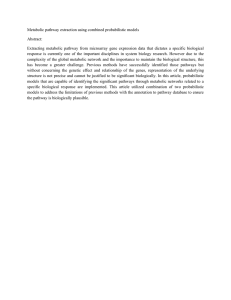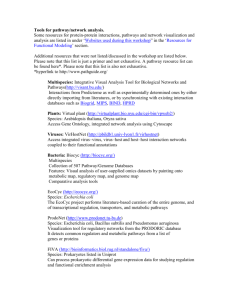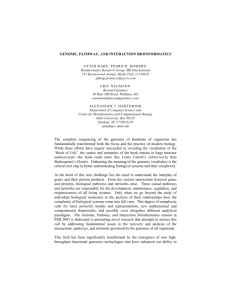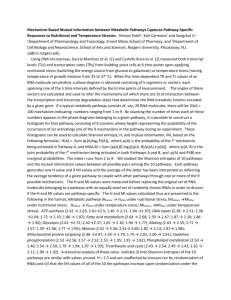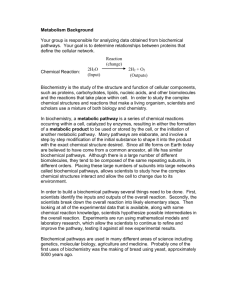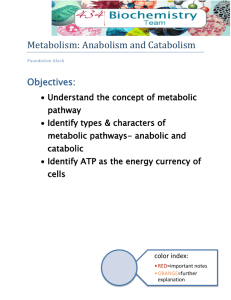Title: CIBCyc : Metabolic reconstructions and orthologs of lactic acid
advertisement
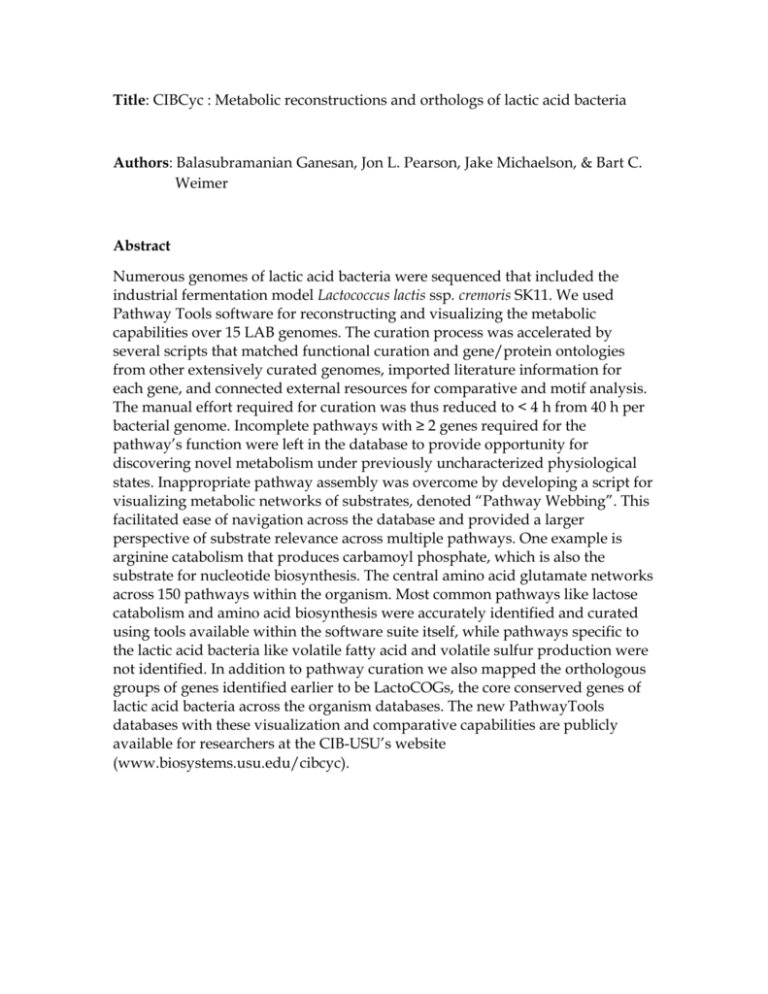
Title: CIBCyc : Metabolic reconstructions and orthologs of lactic acid bacteria Authors: Balasubramanian Ganesan, Jon L. Pearson, Jake Michaelson, & Bart C. Weimer Abstract Numerous genomes of lactic acid bacteria were sequenced that included the industrial fermentation model Lactococcus lactis ssp. cremoris SK11. We used Pathway Tools software for reconstructing and visualizing the metabolic capabilities over 15 LAB genomes. The curation process was accelerated by several scripts that matched functional curation and gene/protein ontologies from other extensively curated genomes, imported literature information for each gene, and connected external resources for comparative and motif analysis. The manual effort required for curation was thus reduced to < 4 h from 40 h per bacterial genome. Incomplete pathways with ≥ 2 genes required for the pathway’s function were left in the database to provide opportunity for discovering novel metabolism under previously uncharacterized physiological states. Inappropriate pathway assembly was overcome by developing a script for visualizing metabolic networks of substrates, denoted “Pathway Webbing”. This facilitated ease of navigation across the database and provided a larger perspective of substrate relevance across multiple pathways. One example is arginine catabolism that produces carbamoyl phosphate, which is also the substrate for nucleotide biosynthesis. The central amino acid glutamate networks across 150 pathways within the organism. Most common pathways like lactose catabolism and amino acid biosynthesis were accurately identified and curated using tools available within the software suite itself, while pathways specific to the lactic acid bacteria like volatile fatty acid and volatile sulfur production were not identified. In addition to pathway curation we also mapped the orthologous groups of genes identified earlier to be LactoCOGs, the core conserved genes of lactic acid bacteria across the organism databases. The new PathwayTools databases with these visualization and comparative capabilities are publicly available for researchers at the CIB-USU’s website (www.biosystems.usu.edu/cibcyc).
